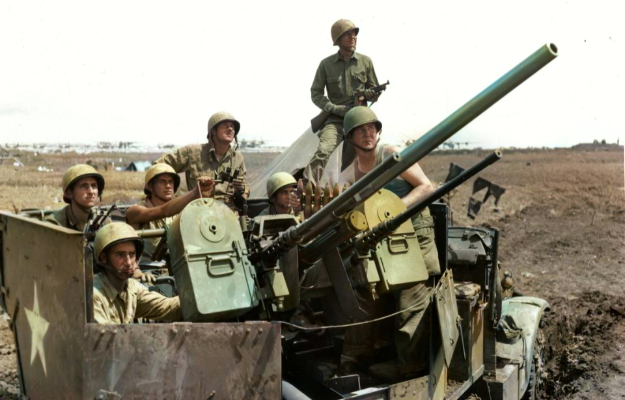The Japanese were known for their use of kamikaze pilots throughout the Second World War. They were deployed during the attack on Pearl Harbor in 1941, with the Battle of Okinawa bringing about something entirely different. Between May 24-25, a group of airborne special forces known as Giretsu Kuteitai were dropped in to conduct a raid against Yontan Airfield, in an effort to stop Allied bombings.
Battle of Okinawa
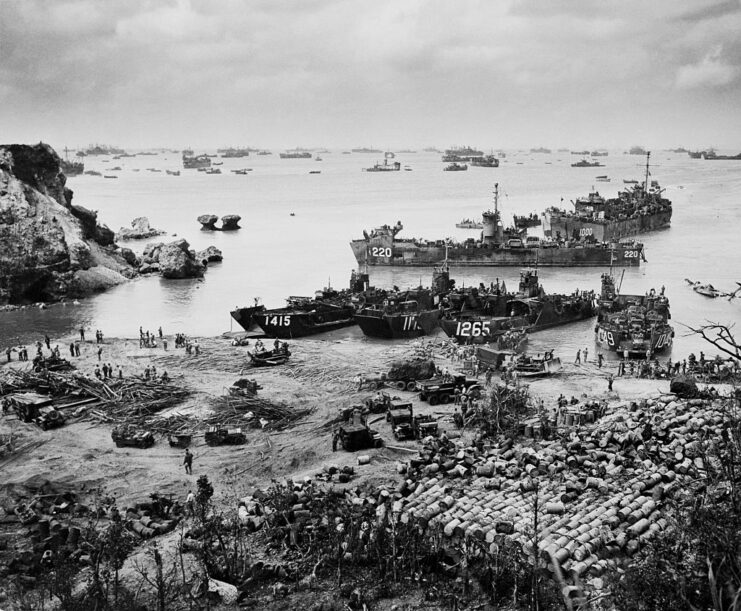
The Americans invaded Okinawa on April 1, 1945, after nearly a week of top-secret underwater demolition teams (UDT) clearing the landing beachings in preparation. Before night came, roughly 50,000 US 10th Army troops landed on Hagushi and gained control of the area. They were met with little pushback from the Japanese, luring them into a false sense of security.
It wasn’t until April 6 that the Japanese launched their first notable attack. More than 350 kamikaze aircraft were deployed to attack the American Naval fleet, with hopes the battleship Yamato would be able to take out those that remained. Instead, the vessel wound up being left open to attack and was sunk the next day.
As the American troops pushed their way through the remainder of Okinawa, the Japanese were busy preparing future suicide attacks.
Yontan Airfield
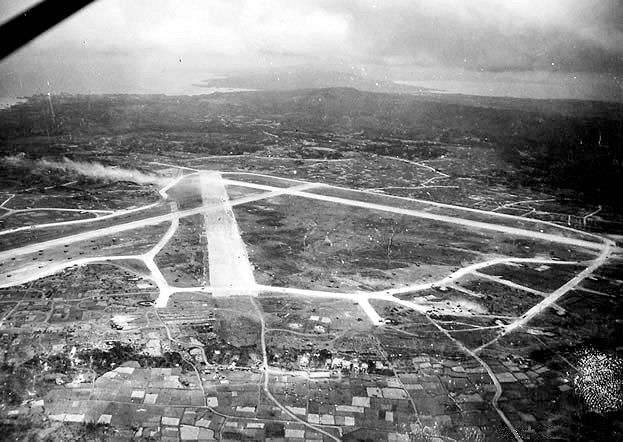
One of the first places the Americans took was Yontan Airfield. In fact, Marines and soldiers were able to take it the same day they landed. It was important to establish an air base for the upcoming battle, so the area was quickly prepared and converted into the first American one on the island.
The earliest aircraft transferred to Yontan were Marine Corps OY-1 Grasshoppers, while Marine Aircraft Group 31 (MAG-31) were the first to land at the airfield on April 7, tasked with combatting the kamikaze pilots. They flew in from the aircraft carriers USS Sitkoh Bay (CVE-86) and USS Breton (CVE-23).
By May 1945, the Marines had exponentially increased their aerial presence in the region, ready to engage enemy aircraft.
Giretsu Kūteitai
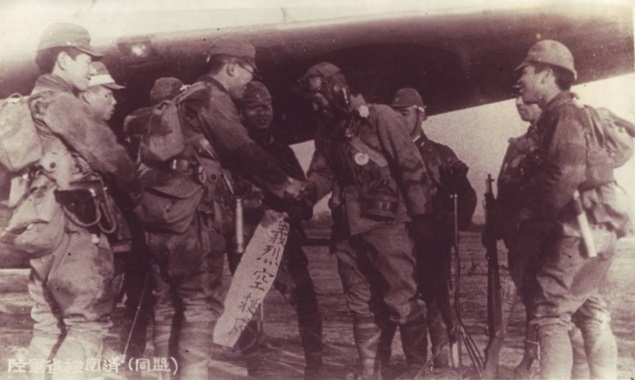
Seeing the increased presence in the region, the Japanese knew they needed to do something to limit the ability of the Americans to counteract kamikaze attacks. This is where the Giretsu Kūteitai – “Heroic Paratroopers,” in English – entered the picture.
They were a special forces unit put together in November 1944 by the Imperial Japanese Army for this very purpose. Commanded by Lt. Gen. Michio Sugahara, they specialized in demolition and sabotage. Their primary goal was to target American Boeing B-29 Superfortresses.
This required some creative planning, as standard magnetic mines wouldn’t stick to the aircrafts’ aluminum bodies. Instead, they developed a pole charge that stuck to the B-29s via a suction cup, rather than a magnet, and delivered four and a half pounds of explosives.
The Giretsu were designed to attack their target in heavy bombers, before crash-landing at the target airfield. Although they weren’t officially suicide troops in the same way the kamikaze were, once they made it to the ground, they were conducting suicide missions, as there was no plan for extraction and their military code prevented them from surrendering.
Launching the raid on Yontan Airfield
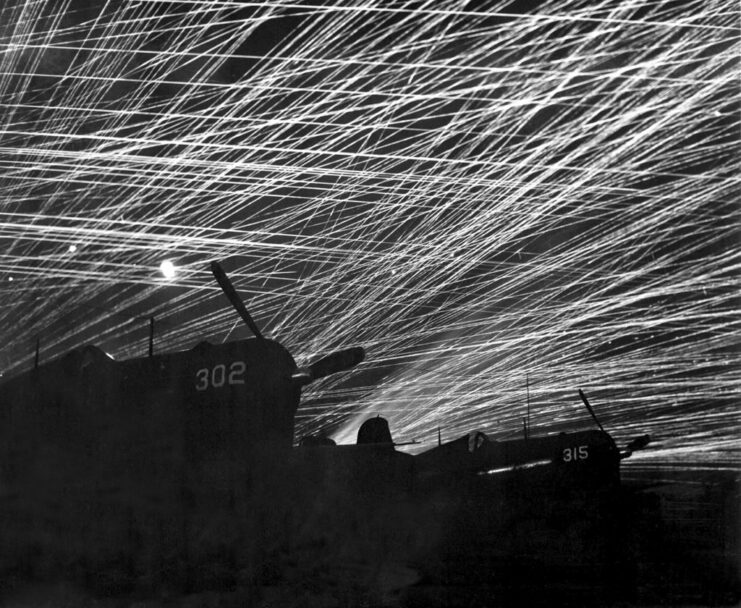
The Giretsu had two previous missions that had been canceled, making the raid on Yontan Airfield their first official assault.
Twelve bombers carrying a total of 136 Commandos departed from near Kengun under cover of darkness on May 24, 1945. Four were to attack a nearby airfield, although sources disagree as to whether it was Kadena or Ie Shima. The remaining eight were to target Yontan. By the time they’d successfully reached Okinawa, four had returned to base due to engine problems. Another three were taken out by American pilots.
The attack started just after 8:00 PM, when regular Japanese bombers began assaulting Yontan. It wasn’t until 10:25 PM that the surviving Giretsu also reached their target, attacking the Marines who held the area. Most of the Commandos were shot from the sky, with only a small number able to undertake their sabotage mission.
The fifth aircraft to arrive was much more successful than the previous; the Giretsu landed and attacked whatever aircraft they could. The Americans quickly dispatched the Commandos, taking out the last of them at 12:55 PM on May 25. Only one attacker was said to survive, although he escaped capture.
Aftermath of the Yontan Airfield raid
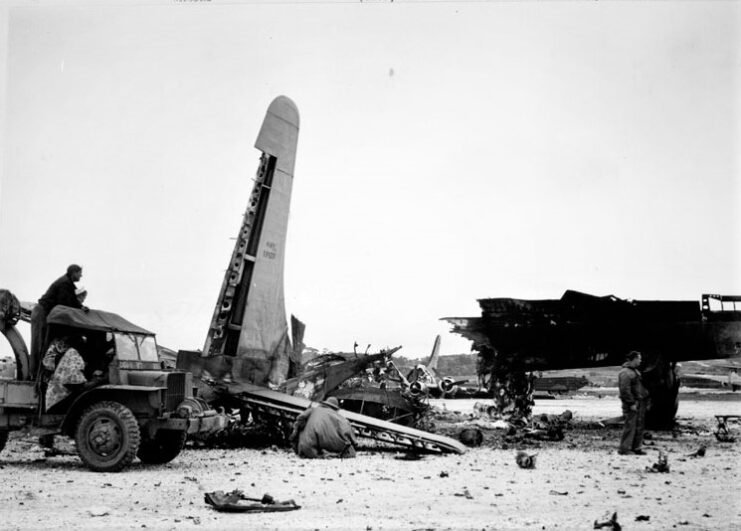
In the aftermath of the Giretsu‘s raid at Yontan, 69 Japanese bodies were found. Four Marines had been killed, while 27 were injured. Thirty-eight aircraft were taken out of the fight, either damaged or destroyed, and the Allies lost 70,000 gallons of fuel.
While this may seem like a large loss, it hardly made a dent in operations at Yontan. The airfield was able to reopen soon after the raid, with little-to-no difficulty.
More from us: Lew Ayres: The Lead Actor In ‘All Quiet on the Western Front’ Was a Pacifist In Real Life
While the Americans would certainly call the raid a failure, the Japanese considered the attack on Yontan Airfield a success – so much so that a second assault was planned, targeting B-29s stationed in the Marianas. Instead of 136 Giretsu, the aim was to use 900.
This never came to be, however, as Japan surrendered on August 15, four days before Operation Ken-gou would have taken place.
